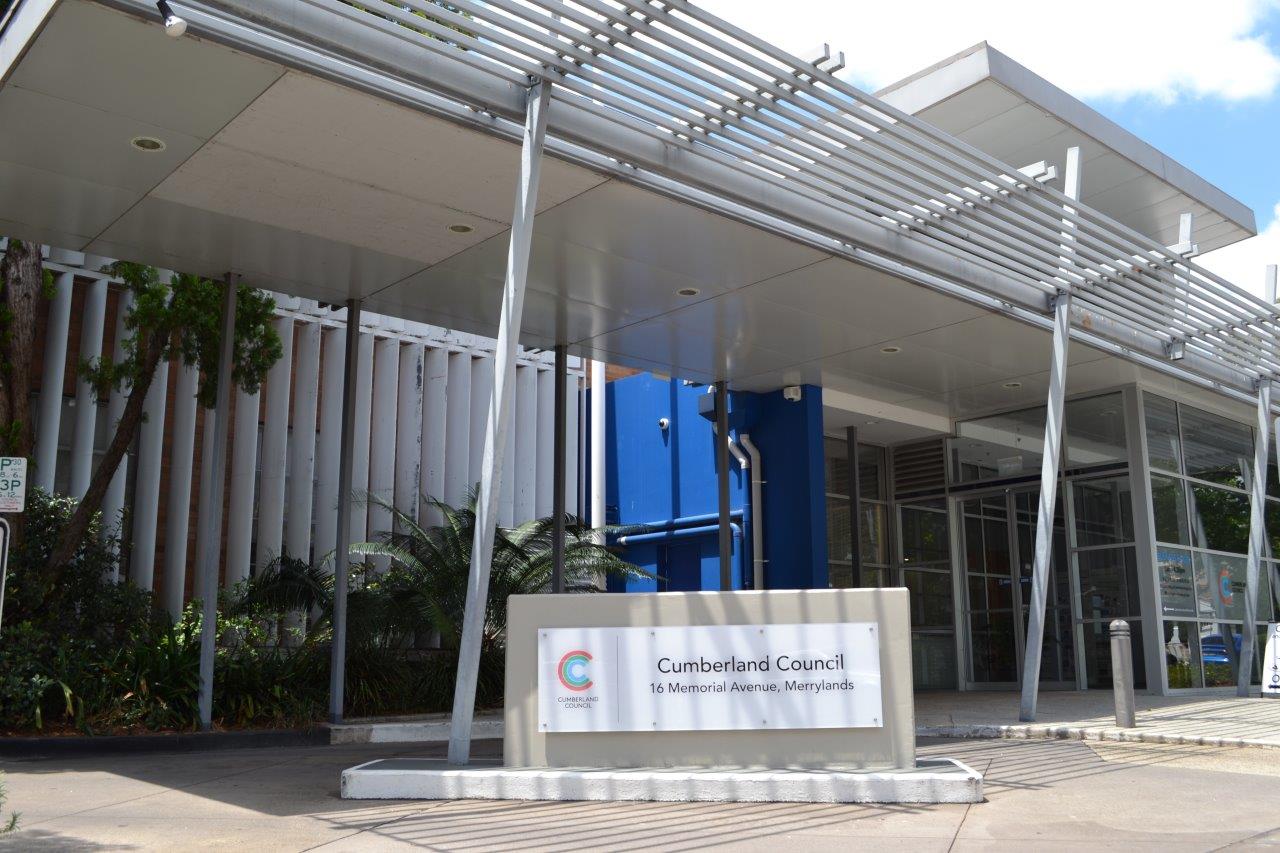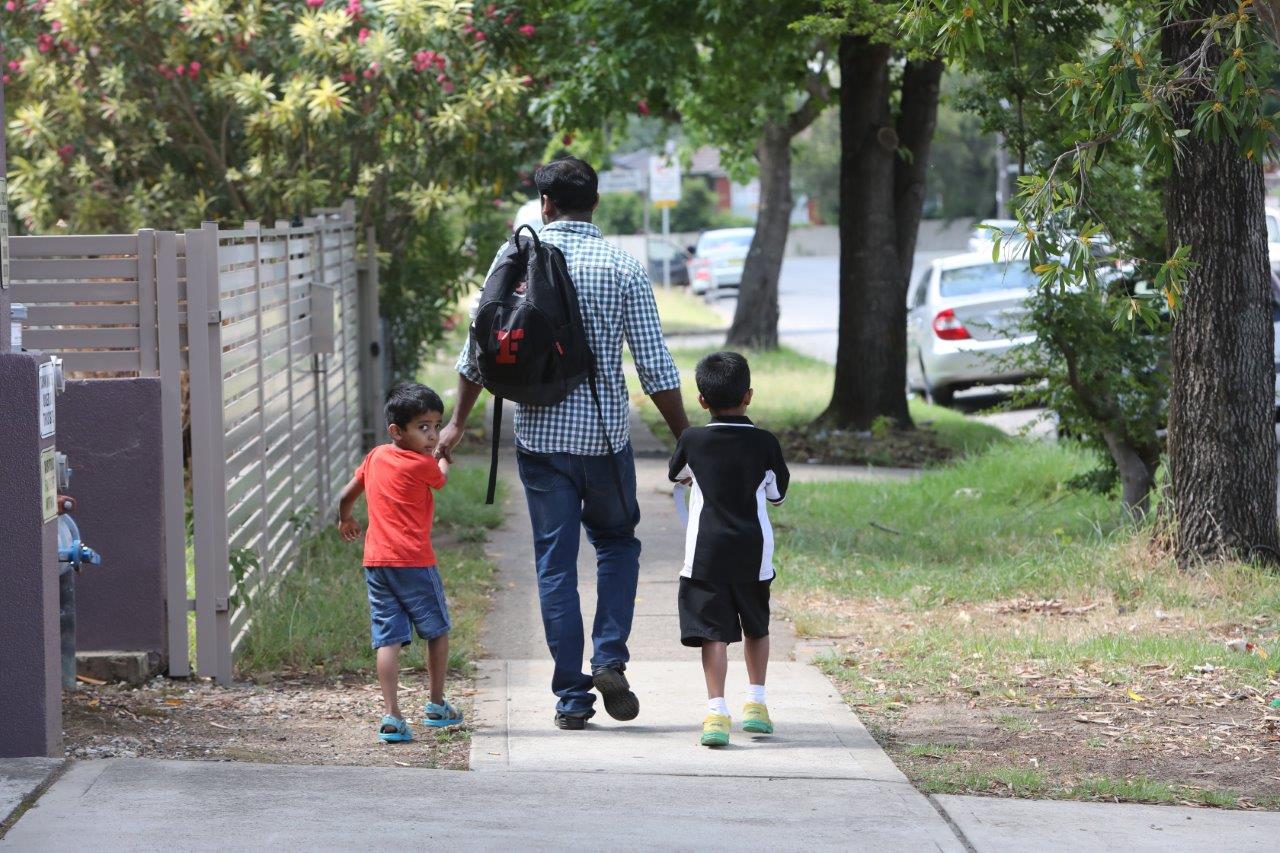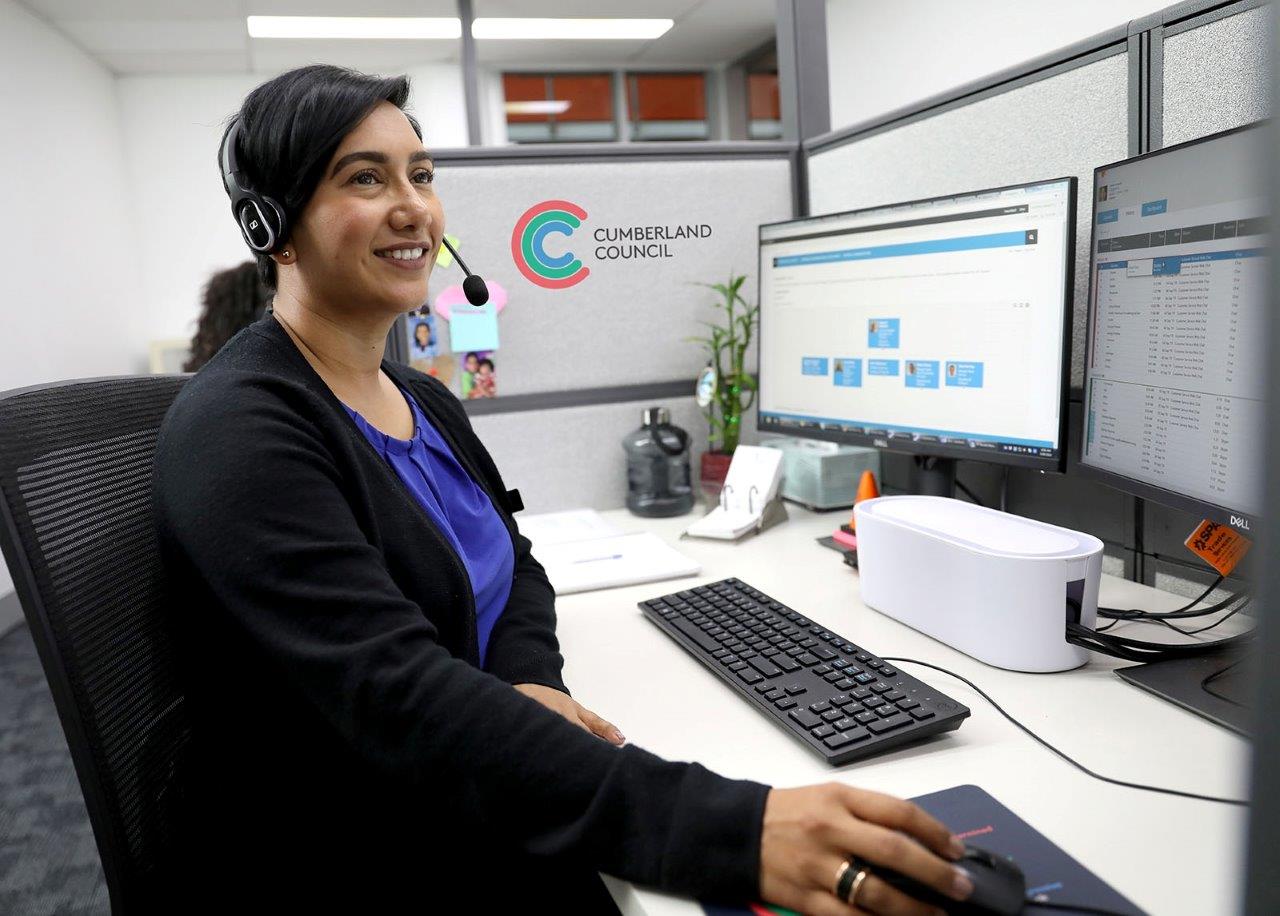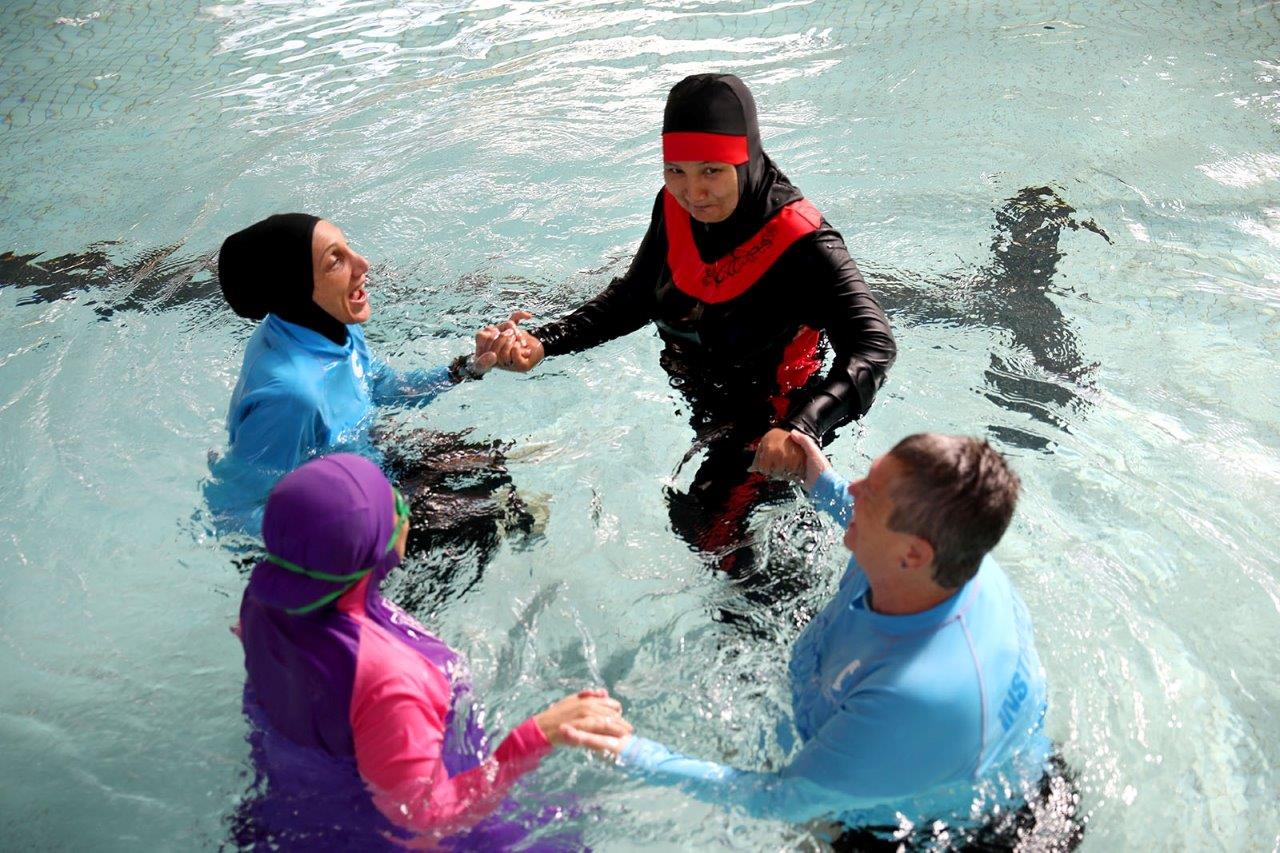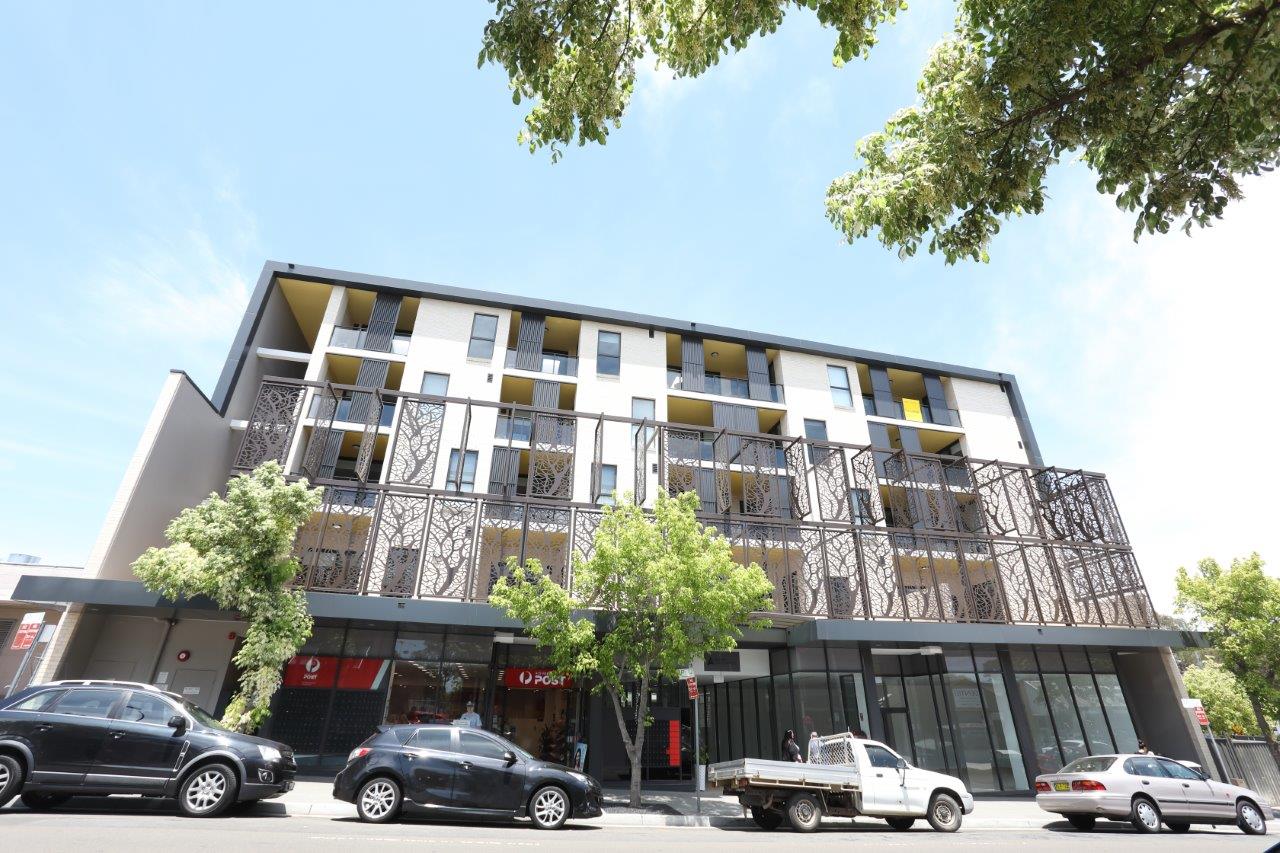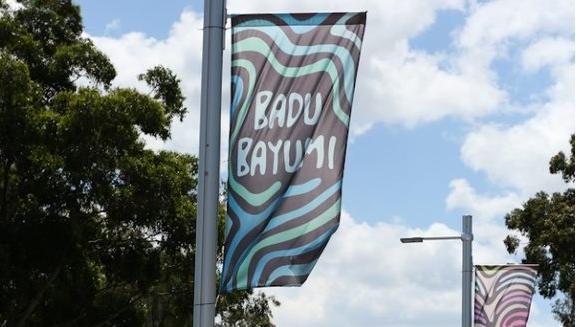
Badu Bayumi means ‘water tunes’ in Dharug Dalang.
These seven individual artworks centre stories around water and how it creates life and growth. It reminds us of how Country provides this resource for its people and visitors who call Dharug Ngurra home.
This artwork was created in collaboration with Dharug Elder Uncle Chris Tobin, Kamilaroi/Gamilaraay artist Dennis Golding, Council’s Aboriginal Education and Program Officers and First Nations school students from across Cumberland and Fairfield LGA’s.
Why was the artwork created?
As a series of creative cultural workshops, Badu Bayumi was developed and led by Dharug Cultural Knowledge Holder and Elder Uncle Chris Tobin and Kamilaroi/Gamilaraay artist Dennis Golding for local Cumberland First Nations and non-First Nations primary and high school students to connect with and celebrate Country, Culture and Identity, as part of the Parramatta Urban Amenity Improvement Program (PRUAIP).
The cultural workshops facilitated by Uncle Chris connected local students to Dharug Cultural heritage, their local environment and the importance of WATER for our communities.
The creative workshops facilitated by Dennis, connected local First Nations students to Country, Culture and Identity. They created artworks that represented their own individual connections to WATER and Dharug Ngurra (Country). The students’ artworks informed the designs for seven banner artworks, including Badu Bayumi (water tunes), Birds Welcoming the Sun, Waterhole, Freshwater Saltwater, Eel, Two Friends and Eucalypt, as part of the full Badu Bayumi artwork.
Artist Dennis Golding reflects on their artwork Badu Bayumi!
How did you come up with the idea for your artwork?
The idea stemmed from everyone’s memory of place and their connection to Country. Badu Bayumi was interpreted in many ways through engagements with young people, each depicting animals and plant life that live and grow around the surrounding waters.
How does it fit into your wider practice?
Collaboration and engagement are core to my creative practice whether its consultation with cultural knowledge holders, workshops with young people, or feedback sessions with community. I do this because stories are presented stronger through shared narratives and experiences.
What did you enjoy about this project?
Through the workshops, I witnessed friendships form and this translated beautifully through the artworks that bring all memories of place together.
Uncle Chris talking about Dharug Cultural Heritage to Merrylands Public School. Photo: Courtesy of Merrylands Public School
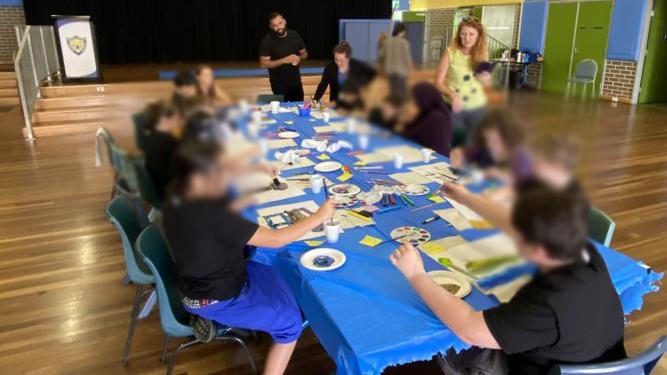
Merrylands Public School First Nations students making their artworks. Photo: Courtesy of Merrylands Public School
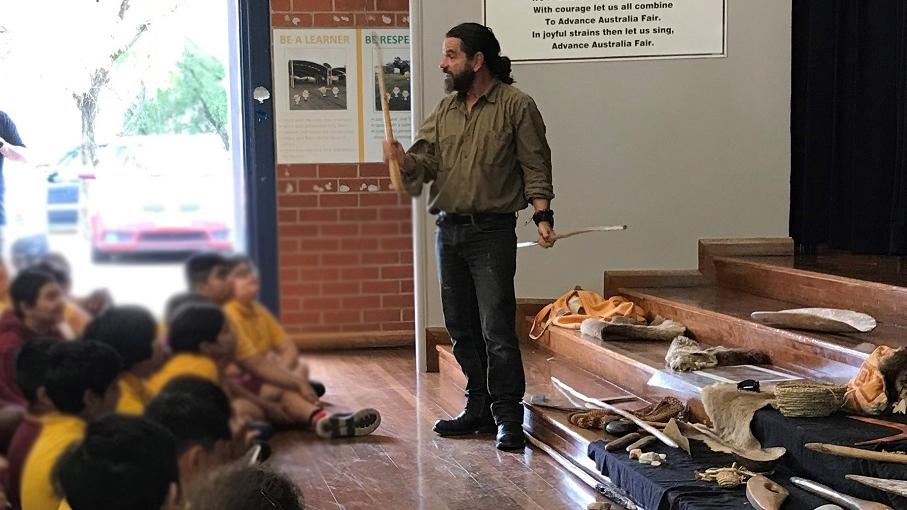
Uncle Chris talking about Dharug Cultural Heritage to Guildford Public School.
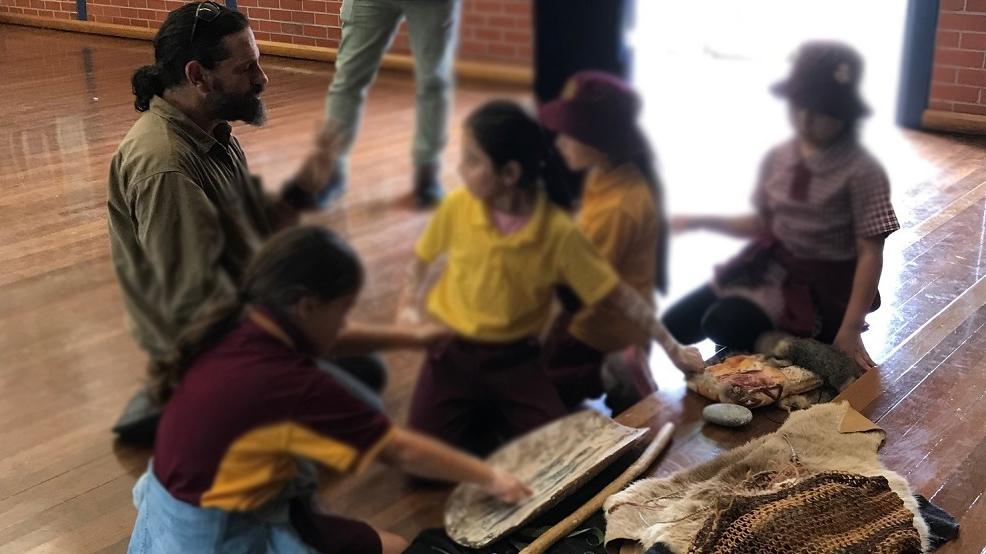
Uncle Chris showing cultural objects like ochre and possum skin bags to Guildford Public School students.
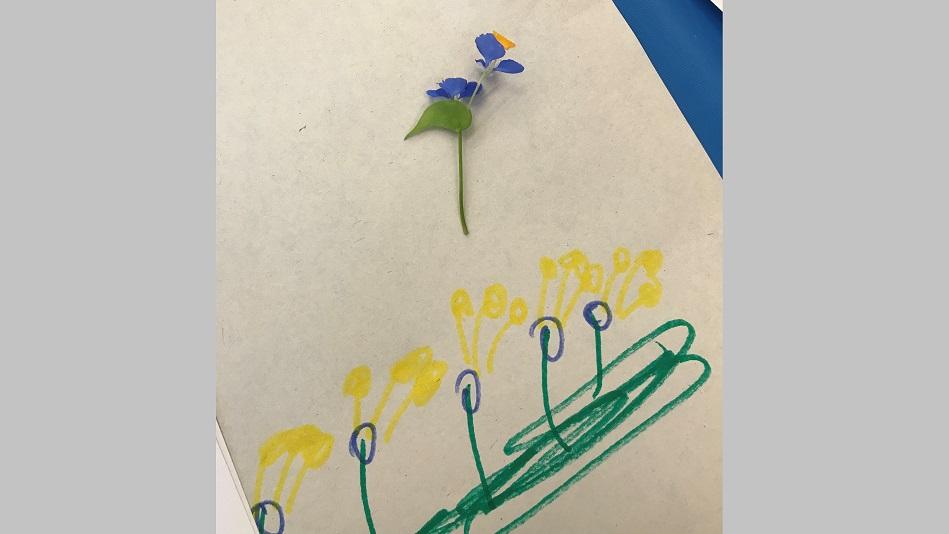
Guildford Public School student artwork creation that inspired the Badu Bayumi ‘Two Friends’ Banner.
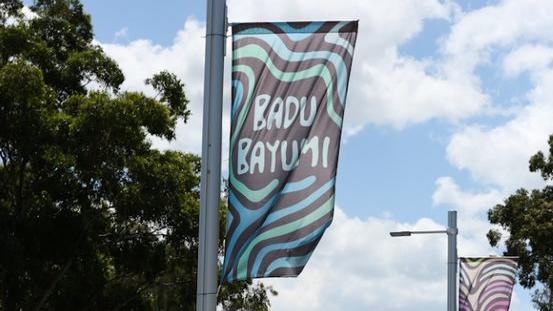
Badu Bayumi banners on Stubbs St in Auburn as part of the Parramatta Road Urban Amenity Improvement Program. Photo: Hollywood Studios
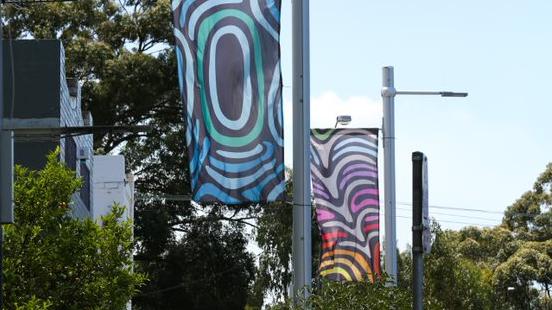
Badu Bayumi banners installed on Melton St South in Auburn. Photo: Hollywood Studios
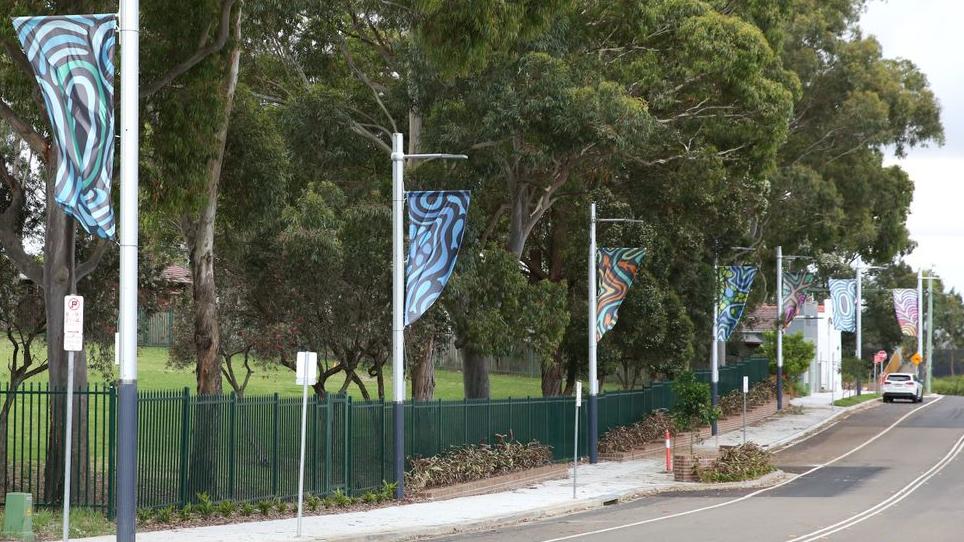
Badu Bayumi banners on Melton St South in Auburn. Photo: Hollywood Studios
Uncle Chris Tobin
Chris Tobin is a Dharug man who has worked as an artist/educator in Western Sydney for over 35 years. He served as an Aboriginal Education Officer for Blue Mountains National Park from 1999 to 2022 and continues his work as a cultural presenter and advisor to schools, local councils and other interested organisations throughout the Blue Mountains, Hawkesbury and the Greater Sydney area.
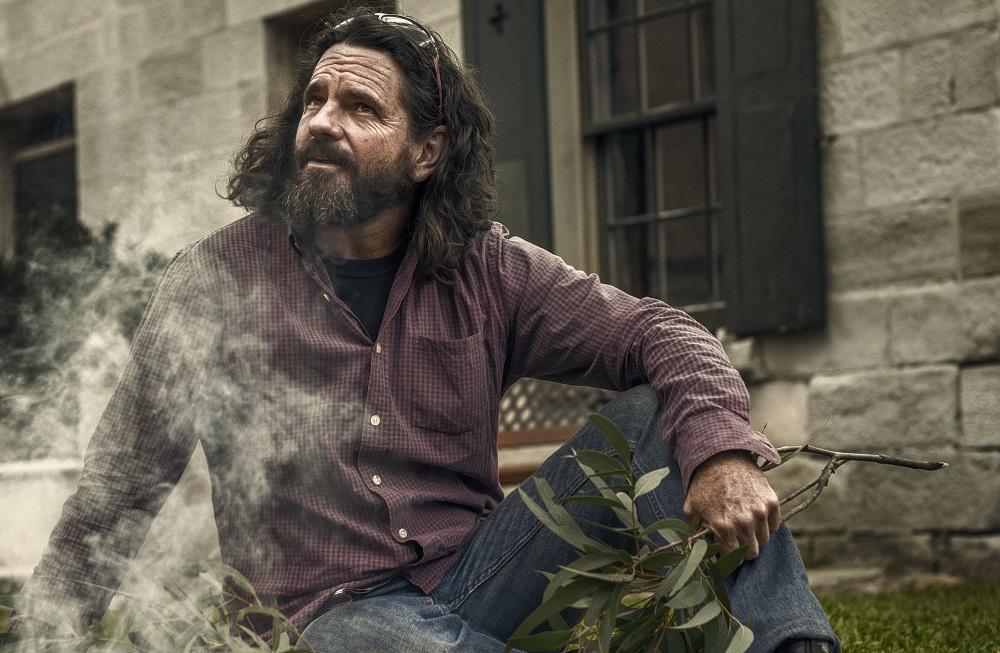
Dennis Golding
Kamilaroi/Gamilaraay artist Dennis Golding develops a practice that pursues a critical view of social, political and cultural representations of Aboriginal Australian history and contemporary experiences. Golding challenges categorical boundaries from both Indigenous and non-Indigenous experiences led by a difference of race, culture, social class and history to form many ways of understanding identity.
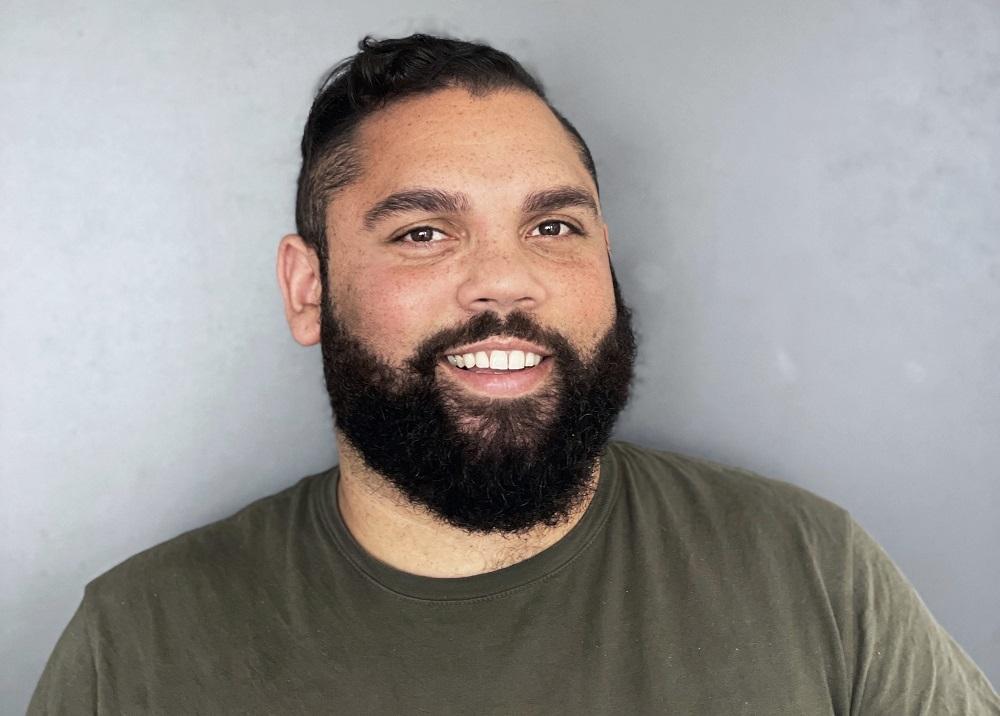
Dennis Golding - Badu Bayumi
Graphic designed banners 2022
